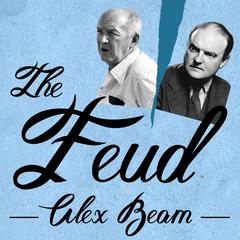 Play Audiobook Sample
Play Audiobook Sample
Broken Glass: Mies van der Rohe, Edith Farnsworth, and the Fight Over a Modernist Masterpiece Audiobook
 Play Audiobook Sample
Play Audiobook Sample
Quick Stats About this Audiobook
Total Audiobook Chapters:
Longest Chapter Length:
Shortest Chapter Length:
Average Chapter Length:
Audiobooks by this Author:
Publisher Description
The true story of the intimate relationship that gave birth to the Farnsworth House, a masterpiece of twentieth-century architecture—and disintegrated into a bitter feud over love, money, gender, and the very nature of art. “An intimate portrait . . . alive with architectural intrigue.”—Architect Magazine In 1945, Edith Farnsworth asked the German architect Mies van der Rohe, already renowned for his avant-garde buildings, to design a weekend home for her outside of Chicago. Edith was a woman ahead of her time—unmarried, she was a distinguished medical researcher, as well as an accomplished violinist, translator, and poet. The two quickly began spending weekends together, talking philosophy, Catholic mysticism, and, of course, architecture over wine-soaked picnic lunches. Their personal and professional collaboration would produce the Farnsworth House, one of the most important works of architecture of all time, a blindingly original structure made up almost entirely of glass and steel. But the minimalist marvel, built in 1951, was plagued by cost overruns and a sudden chilling of the two friends’ mutual affection. Though the building became world famous, Edith found it impossible to live in, because of its constant leaks, flooding, and complete lack of privacy. Alienated and aggrieved, she lent her name to a public campaign against Mies, cheered on by Frank Lloyd Wright. Mies, in turn, sued her for unpaid monies. The ensuing lengthy trial heard evidence of purported incompetence by an acclaimed architect, and allegations of psychological cruelty and emotional trauma. A commercial dispute litigated in a rural Illinois courthouse became a trial of modernist art and architecture itself. Interweaving personal drama and cultural history, Alex Beam presents a stylish, enthralling narrative tapestry, illuminating the fascinating history behind one of the twentieth century’s most beautiful and significant architectural projects.
Download and start listening now!
Broken Glass Listener Reviews
Be the first to write a review about this audiobook!
About Alex Beam
Alex Beam is an American writer and journalist. He is also a columnist for The Boston Globe. He has worked at Newsweek and BusinessWeek, where his tenure included Boston and Moscow bureau chief, before joining the Boston Globe.
About Kimberly Farr
Kimberly Farr is an actress and winner of numerous AudioFile Earphones Awards for narration. She has appeared on Broadway and at the New York Shakespeare Festival, the Roundabout Theatre, Playwright’s Horizons, and the American Place. She created the role of “Eve” in Arthur Miller’s first and only musical, Up from Paradise, which was directed by the author. She appeared with Vanessa Redgrave in the Broadway production of The Lady from the Sea and has acted in regional theaters across the country, including a performance in the original production of The 1940’s Radio Hour at Washington, DC’s Arena Stage.






